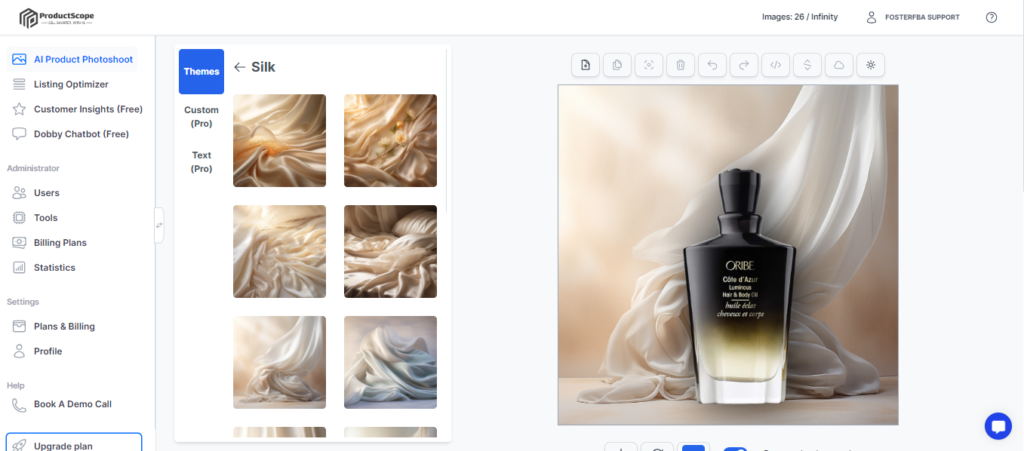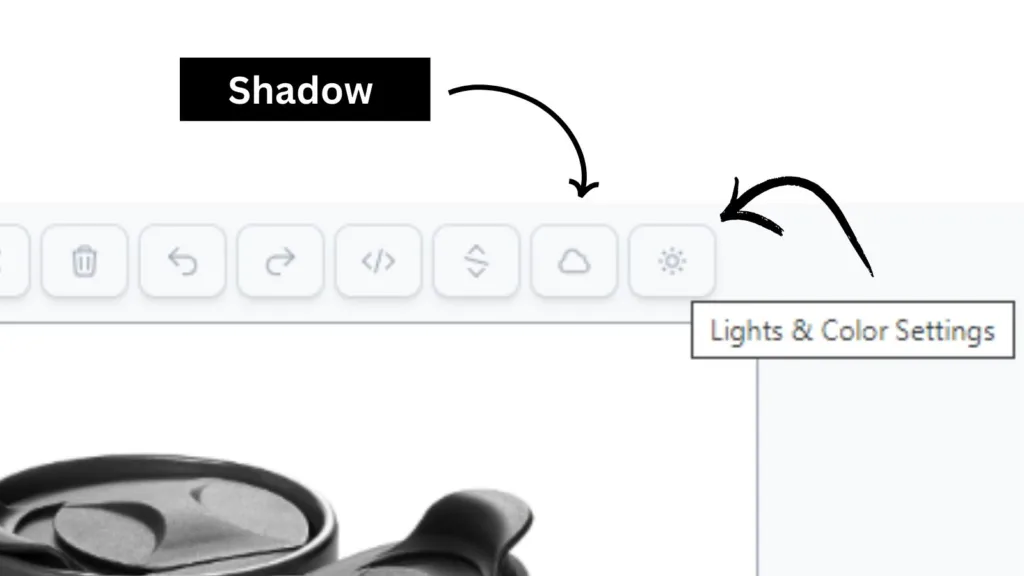Creating a month’s worth of social media content in under an hour might sound like a daunting task, but with the right strategy and tools, it’s entirely achievable.
Here’s a step-by-step guide to efficiently generating engaging and effective content for your product.
Step 1: Set Clear Goals
Before diving into content creation, it’s crucial to define your objectives. Are you aiming to increase brand awareness, boost product sales, or engage more with your audience? Setting clear goals will guide your content strategy and help you measure its success.
For example, if your goal is to increase brand awareness, your posts may focus on creating informative and shareable content that showcases your brand’s values, unique selling points, and expertise. You may prioritize creating content that resonates with your target audience and encourages them to engage with and share your brand’s message. If you’re using Twitter (X) one such way is to use a tool like SuperX to understand your audience and refine your content.

Step 2: Gather Resources
Preparation is half the battle. Collect high-quality product images, customer testimonials, and any other relevant materials. Keep a list of upcoming holidays and events to create timely and relevant content. Utilize tools like an AI product photo backdrop generator to enhance your images, making them more appealing and unique.
Step 4: Choose Your Platforms
When it comes to social media marketing, it’s important to choose the right platforms to reach your target audience effectively. Not all social media platforms are created equal, and each has its own unique features and user demographics.
By selecting the platforms where your target audience is most active and that align best with your product and content style, you can maximize your reach and engagement.

Step 5: Brainstorm Content Ideas
Creating engaging and diverse content is key to keeping your audience interested and coming back for more. When brainstorming content ideas for your social media posts, it’s important to mix educational, promotional, and engaging content to provide value to your audience while also promoting your product.
One approach is to use different backdrops or settings to highlight the message or theme of each post. This can add visual interest and variety to your content. For instance, if you sell outdoor gear, you could showcase your products in different outdoor locations, such as a mountain peak, a beach, or a forest, to demonstrate how they can be used in various environments.
Step 6: Create a Content Calendar
Once you have brainstormed your content ideas, it’s time to organize them into a content calendar. A content calendar helps you stay organized and ensures that you have a consistent flow of content throughout the month. Assigning themes or post types to each day can help you maintain variety and keep your audience engaged.
Consider planning specific days where visual appeal is paramount. Visual content tends to grab attention and generate higher engagement on social media platforms. This is where AI-enhanced images can come in handy.
Remember to leave room for flexibility in your content calendar. While having a plan is important, it’s also essential to be adaptable and responsive to current events or trends that may arise during the month.

Step 7: Batch Content Creation
Batch content creation is a time-saving technique that involves creating multiple pieces of content in one sitting. By dedicating a specific block of time to create content in bulk, you can streamline your workflow and ensure a consistent flow of content throughout the month.
Here’s how you can use AI to enhance your batch content creation process:
Use an AI Backdrop Generator Like ProductScope
One way to make your product photos stand out is by using unique backdrops. Instead of manually setting up different backgrounds for each product photo, you can leverage AI technology to generate custom backdrops.
AI backdrop generators, such as Productscope, can create stunning and eye-catching backgrounds that perfectly complement your products.
Productscope utilizes sophisticated algorithms to analyze your product images and generate visually appealing backdrops. These generators are adept at creating backdrops based on various styles, colors, or patterns, ensuring that each backdrop not only enhances but also harmonizes with your product’s aesthetics.

Experiment With Various Styles to Match Your Content Plan
When using an AI backdrop generator, you have the flexibility to experiment with different styles that align with your content plan. For example, if you’re promoting a summer collection, you can choose vibrant, beach-themed backdrops. If you’re showcasing a luxury product line, you can opt for elegant and sophisticated backdrops. The AI technology allows you to easily switch between different styles and find the perfect match for each product or theme.
Write Captivating Captions and Create Other Visual Elements
While AI can assist with generating backdrops, it’s important to remember that the content itself still requires human creativity and engagement. Take the time during your batch content creation session to write captivating captions that accompany your product photos. Craft compelling and concise messages that resonate with your audience and encourage them to take action.

Step 8: Leverage Content Creation Tools
Content scheduling tools are a game-changer when it comes to efficient content creation. These tools enable you to upload your product photos, captions, and other visual elements in advance and schedule them to be automatically published at specific times.
By planning and scheduling your content ahead of time, you can ensure a consistent posting schedule without the need for manual intervention every day. Some popular content scheduling tools include Hootsuite, Buffer, and Later.
Moreover, AI-powered tools can significantly speed up the process of creating captions for your product’s social media posts.
One such tool is ProductScope with the following features:
- Text Over Images– This feature allows users to add text overlays to their images. It’s commonly used to insert captions, descriptions, or any other textual content directly onto the photo. This can be particularly useful for creating marketing materials, personalized messages, or just adding context to the image.
- Different Ready to Use Themes – This implies that the generator comes with a variety of pre-designed themes that users can easily apply to their photoshoot backdrops. These themes might include different color schemes, patterns, or graphical elements. Ready-to-use themes save time and effort, especially for users who need quick results or lack design skills.

- Custom Prompts Themes – This feature likely allows users to create their own themes based on custom prompts. It means that users can input specific instructions or ideas, and the generator will create a theme based on these inputs. This is useful for creating highly personalized or unique backdrops that align closely with specific creative visions or branding requirements.
- Shadow and Brightness – This feature refers to the ability to adjust the shadow and brightness levels in the backdrop. Manipulating shadow and brightness can dramatically change the mood and depth of the photo. Shadows can add drama or focus, while brightness adjustments can help in highlighting certain elements or creating a particular ambiance.

Step 9: Optimize and Schedule
To maximize the impact of your product social media content, it’s crucial to optimize your posts for each platform and schedule them strategically. This involves tailoring your content to align with each platform’s preferences and ensuring that your AI-generated backdrops and visuals are visually striking.
Here’s how you can optimize and schedule your content effectively:
Make Sure Your AI-Generated Backdrops Are in Line With Each Platform’s Preferences
Different social media platforms have distinct aesthetics and preferences when it comes to visuals. For example, Instagram is known for its visually striking and high-quality images, while Twitter focuses more on concise text-based content. When using AI-generated backdrops, it’s essential to ensure that they align with the visual style of each platform.

Tailor Your Content Accordingly
Each social media platform has its own unique audience and purpose. To create engaging product social media content, it’s important to tailor your posts according to the preferences and expectations of each platform’s users.
Quick Review and Adjust
Before going live, review everything. Ensure the AI-generated images align with your brand standards and appeal to your target audience. Be prepared to make manual adjustments if needed.
Conclusion
By following these steps, you can efficiently create a month’s worth of compelling social media content in less than an hour. This approach not only saves time but also ensures a consistent and engaging online presence for your product, leveraging the latest AI tools to enhance visual appeal and relevance. Remember, the key is in the preparation and smart use of technology – it’s about working smarter, not harder.
Elevate your Amazon product listings with ProductScope’s AI Product Photoshoot Backdrops! Imagine your product anywhere – a sunlit breakfast table, a cozy reading nook, or even atop a mountain summit. Unleash your creativity with AI prompts and transform your vision into stunning, high-quality images at a fraction of the cost of professional photoshoots today!
Sign Up for ProductScope AI Today!
FAQs
What is Social Media Content?
Social media content refers to any form of content—text, images, videos, and interactive elements—created and shared through social media platforms. It’s designed to engage audiences, promote brands, or communicate personal ideas and experiences.
How Often Should You Post on Social Media?
The ideal frequency for posting on social media varies by platform and audience. For instance, on Twitter, 3-5 tweets per day can be effective, while on Facebook, 1-2 posts per day is often recommended. It’s crucial to balance consistency with audience engagement.
What Types of Content Perform Best on Social Media?
Visual content, such as images and videos, typically performs best on social media. Interactive content like polls, quizzes, and user-generated content also engages audiences effectively. The key is to create content that resonates with your target audience and encourages interaction.
How Can You Measure the Success of Social Media Content?
Success on social media can be measured through various metrics like engagement rate (likes, comments, shares), reach, follower growth, and click-through rates. Tools like Google Analytics and social media platform insights provide valuable data for analysis.
What Are the Best Practices for Creating Engaging Social Media Content?
To create engaging social media content, focus on understanding your audience, using high-quality visuals, crafting compelling captions, and encouraging interaction. Also, staying current with trends and using hashtags effectively can increase visibility and engagement.
How Important is Video Content in Social Media?
Video content is extremely important in social media due to its high engagement rates. Platforms like TikTok, Instagram Reels, and YouTube Shorts emphasize short-form video content, which can significantly boost audience interaction and brand visibility.
Can Social Media Content Improve SEO?
While social media content itself doesn’t directly impact SEO rankings, it can indirectly benefit SEO through increased brand visibility, traffic to your website, and potential backlinks, which are key factors in search engine rankings.
What is the Role of Hashtags in Social Media Content?
Hashtags help categorize content, making it discoverable to audiences searching for specific topics. They can increase the reach of your posts, attract followers, and boost engagement. However, it’s important to use relevant and not excessive hashtags.
How to Handle Negative Comments on Social Media?
Handle negative comments professionally by responding promptly, acknowledging the issue, and offering a solution or directing the conversation to a private channel. It’s important to maintain a positive brand image and address customer concerns effectively.
What is the Impact of Social Media Algorithms on Content Visibility?
Social media algorithms affect how content is displayed to users, prioritizing content based on relevance, engagement, and user preferences. Understanding these algorithms can help in creating content that has a better chance of being seen by your target audience.

